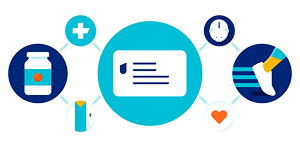If you’re a smoker, you may have thought about quitting. There are many reasons to do it — and your health is a big one. Smoking is the top cause of preventable death in the United States. It hurts nearly every part of your body, and it increases your risk of certain cancers, heart disease, lung disease and more.
Quitting smoking is one of the best things you can do for your health. And it’s never too late to quit. “Some people think, ‘I’ve been smoking for 15 years or 20 years — it’s too late,” says David Tzall, Psy.D., a licensed psychologist in New York City who specializes in smoking cessation.
But no matter how long you’ve smoked for, quitting has nearly immediate benefits for your health. “When you stop smoking, within the first 20 minutes your blood pressure returns to normal,” Tzall points out.
Maybe you’ve tried quitting once, twice or more. More than half of cigarette smokers say they have tried quitting in the past year, according to the Centers for Disease Control and Prevention (CDC). But fewer than 1 in 10 succeed.
Smoking is highly addictive, and it can be really hard to quit. But with a good support system and a plan in place, it’s possible. Here is a 5-step plan to help you quit smoking for the last time.
A serious medical condition, like lung cancer, can quickly bust your health care budget. Learn how critical illness insurance can help you balance it again.
Step 1: Set a deadline
The first step toward going cigarette-free is to set a quit date. Ideally, it should be within 1 or 2 weeks of your decision to quit. If you pick a date that’s too far away, you could lose motivation. But you also want to give yourself time to prepare to quit.
“You want to plan out your quitting strategy, because it won’t be as effective if you do it on the fly,” says Tzall.
Once you’ve set your quit date, there are things you can do to prepare. First, take some time to think about — and write down — your reasons for quitting. There are many reasons to quit smoking. Consider which ones are most important to you. They might include:
- I want to improve my health.
- I want to set a good example for the young people in my life.
- I have a baby on the way.
- I want to keep my family healthy.
- I want to save money.
- I want to spend more time with friends and family who don’t smoke.
Once you pinpoint your reasons for quitting, it will help keep you motivated over the next few weeks and months. Refer back to this list any time you’re craving a cigarette.
Step 2: Tell your friends, family and co-workers
It may be easier to quit for good if the people around you support you and hold you accountable. There are many things your loved ones can do to support you, such as:
- Agreeing not to smoke around you
- Checking in and celebrating your progress with you
- Doing smoke-free activities with you, such as taking a walk or going to the movies
- Helping you change your routine and avoid triggers that make you want a cigarette
- Sharing their own quitting stories and what worked for them
- Talking you out of a cigarette if you’re having a craving
Be specific and let them know what kind of support will be most helpful for you. And let them know if something they’re doing isn’t helpful. For example, maybe a daily check-in from a friend starts to feel more like nagging. Let them know — and tell them what you’d rather they do instead.
Let your loved ones know that nicotine withdrawal may affect your mood, too. (Nicotine is the chemical in tobacco products that makes them so addictive.) They’ll understand and can help you through it.
Step 3: Talk to your doctor about ways to quit
Your doctor can be an important partner in helping you quit. There are several over-the-counter and prescription products that they can recommend. Those might include nicotine replacement therapy or prescription drugs.
Nicotine replacement therapy (NRT). Replacing cigarettes with another source of nicotine, such as gums, lozenges or patches, can help you stop smoking while reducing the intensity of nicotine withdrawal symptoms.
“These products are great ways to quit,” says Tzall. “When you get nicotine from a patch or a gum, you’re not getting all the other chemicals that you get from smoking.”
Nicotine itself is relatively harmless. It’s the other chemicals in cigarettes that cause the health problems linked to smoking, says Tzall. “So, you can chew gum indefinitely and never see the same kind of health effects as from tobacco.” Of course, you can also use NRT products to slowly wean yourself off nicotine by using smaller and smaller doses.
You can get even more out of this type of treatment by combining different NRT products. In fact, using the nicotine patch, which delivers a steady stream of nicotine, along with other forms, such as gum or a lozenge, as needed, has been shown to be more effective than just using 1 alone. Your doctor can help you come up with a strategy for employing NRT.
Prescription drugs. There are also 2 prescription medications that can help you quit smoking:
- Varenicline (Chantix): This drug works on the brain to reduce nicotine withdrawal symptoms and cigarette cravings.
- Bupropion (Zyban): Also sold as the antidepressant Wellbutrin, this medication has been shown to help with quitting smoking.
“Both drugs are very effective, although one side effect of Chantix is vivid dreams/nightmares that distress people [to the point where they may not] tolerate the medication,” says Tzall.
Talk to your doctor about combining 1 of these drugs with NRT. Research suggests that it may improve quit rates.
Ask yourself: If you got sick and had to miss work, would you have enough to cover your bills? That’s where critical illness insurance can help. Explore it today.
Step 4: Join a support group.
Support from loved ones and your doctor can go a long way in helping you quit. But sometimes it’s not enough. If you find that you need more help, consider joining a support group, either in person or online.
A support group gives you a place to get ongoing encouragement. It’s also a chance to talk about any problems you have while quitting, such as weight gain, prolonged withdrawal symptoms or intense cravings.
You could also talk to a therapist or counselor that specializes in quitting smoking, like Tzall. They can give you personalized support and talk through any challenges you’re facing.
There are also free hotlines, like 1-800-QUIT-NOW, and text messaging programs that you can use for ongoing support. Research shows that people who get encouragement and advice via a simple text message program are more likely to quit smoking permanently than those who don’t.
Ready to explore insurance plans where you live?
Step 5: Set yourself up for success.
You’ll need a game plan to deal with cravings when they happen and prevent yourself from giving in. Before your quit date, take some time to set yourself up for success:
- Purge your tobacco products. Get rid of all your cigarettes and tobacco products. Make sure they’re not in:
- Your car
- Your desk at work
- Your home office
- Your house
You’ll want to make sure that they’re not anywhere you might be able to access them. Get rid of anything smoking-related too, such as matches, lighters and ashtrays.
-
Know your triggers. These are the people, places and things that you associate with smoking, says Tzall. For example, maybe you normally smoke during a work break or with a certain friend. Avoiding those triggers can help stop cravings. (Obviously, if that friend is a good one, they’ll be helping you avoid your triggers too.)
-
Have a plan to fight cravings. Most tobacco cravings pass within 5 minutes, according to Tzall. When they hit, find something to distract yourself or disrupt your craving. “The longer you can delay a craving, the more likely it is to go away on its own,” says Tzall. He recommends sipping a cold glass of water or sucking on ice cubes.
Another option is to go for a quick, brisk walk. Research shows short periods of physical activity help reduce the urge to smoke.
If that’s not doable, make a quick phone call to a friend. It’s a good idea to have at least 3 go-to people on speed dial that you can call when you have a craving. That way, you know that you will have at least 1 person to talk to and help you get through the moment.
“Know that your craving is going to pass,” says Tzall. “If you have a craving, know that you do not have to give in to it.”
-
Get health insurance. Don’t have access to a doctor or treatments that can help you quit? A great way to help afford the care you need is to get health insurance. You can also supplement that traditional plan with critical illness insurance today. Call a licensed insurance agent at 1-844-211-7730 for more information.
The above is provided as general information only. It is not intended to diagnose or recommend treatment of any illness, disease or condition. You should consult a qualified medical professional if you have questions or need more information.
Sources:
Centers for Disease Control and Prevention. “Health effects of cigarette smoking.” October 29, 2021. Retrieved from https://www.cdc.gov/tobacco/data_statistics/fact_sheets/health_effects/effects_cig_smoking/index.htm
Centers for Disease Control and Prevention. “Smoking cessation: Fast facts.” March 21, 2022. Retrieved from https://www.cdc.gov/tobacco/data_statistics/fact_sheets/cessation/smoking-cessation-fast-facts/index.html
National Institute on Drug Abuse. “What are treatments for tobacco dependence?” May 2022. Retrieved from https://nida.nih.gov/publications/research-reports/tobacco-nicotine-e-cigarettes/what-are-treatments-tobacco-dependence
Smokefree.gov. “Fight cravings with exercise.” Retrieved from https://smokefree.gov/challenges-when-quitting/cravings-triggers/fight-cravings-exercise Accessed March 28, 2023
Smokefree.gov. “Prepare to quit.” Retrieved from https://smokefree.gov/quit-smoking/getting-started/prepare-to-quit Accessed March 28, 2023
Smokefree.gov. “Reasons to quit.” Retrieved from https://smokefree.gov/quit-smoking/why-you-should-quit/reasons-to-quit Accessed March 28, 2023
Compliance code:
49757-X-0523











